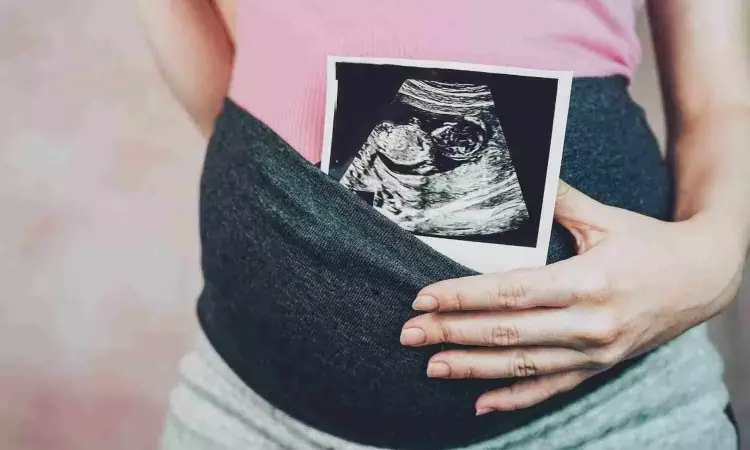- Home
- Medical news & Guidelines
- Anesthesiology
- Cardiology and CTVS
- Critical Care
- Dentistry
- Dermatology
- Diabetes and Endocrinology
- ENT
- Gastroenterology
- Medicine
- Nephrology
- Neurology
- Obstretics-Gynaecology
- Oncology
- Ophthalmology
- Orthopaedics
- Pediatrics-Neonatology
- Psychiatry
- Pulmonology
- Radiology
- Surgery
- Urology
- Laboratory Medicine
- Diet
- Nursing
- Paramedical
- Physiotherapy
- Health news
- Fact Check
- Bone Health Fact Check
- Brain Health Fact Check
- Cancer Related Fact Check
- Child Care Fact Check
- Dental and oral health fact check
- Diabetes and metabolic health fact check
- Diet and Nutrition Fact Check
- Eye and ENT Care Fact Check
- Fitness fact check
- Gut health fact check
- Heart health fact check
- Kidney health fact check
- Medical education fact check
- Men's health fact check
- Respiratory fact check
- Skin and hair care fact check
- Vaccine and Immunization fact check
- Women's health fact check
- AYUSH
- State News
- Andaman and Nicobar Islands
- Andhra Pradesh
- Arunachal Pradesh
- Assam
- Bihar
- Chandigarh
- Chattisgarh
- Dadra and Nagar Haveli
- Daman and Diu
- Delhi
- Goa
- Gujarat
- Haryana
- Himachal Pradesh
- Jammu & Kashmir
- Jharkhand
- Karnataka
- Kerala
- Ladakh
- Lakshadweep
- Madhya Pradesh
- Maharashtra
- Manipur
- Meghalaya
- Mizoram
- Nagaland
- Odisha
- Puducherry
- Punjab
- Rajasthan
- Sikkim
- Tamil Nadu
- Telangana
- Tripura
- Uttar Pradesh
- Uttrakhand
- West Bengal
- Medical Education
- Industry
Study investigates causes of fetal growth disorders

Common complications of pregnancy affecting fetal size may be caused by irregularities in the transport of amino acids across the placenta-a finding with therapeutic implications. Intrauterine growth restriction (IUGR) and fetal overgrowth affect 15-20% of pregnancies worldwide. Abnormal fetal growth is strongly linked to the development of obesity, diabetes, and cardiovascular disease in later life. Placental transport of essential amino acids is decreased in human IUGR and increased in fetal overgrowth, but whether this was a cause or consequence was unclear.
Fredrick Rosario-Joseph and colleagues created a line of mice in which the trophoblast-the main cell type in the placenta responsible for the transport of nutrients to the fetus-overexpresses a gene known as Large Neutral Amino Acid Transporter Small Subunit 1 or Slc7a5, which codes for proteins that move essential amino acids across the placenta.
The authors hypothesized that overexpressing Slc7a5 would increase fetal growth, showing a direct mechanistic link between the transport of amino acids and these common fetal conditions. Indeed, the mice bred to overexpress Slc7a5 had placentas that were on average10% bigger and fetuses that were on average 27% bigger than control mice. According to the authors, the results could help inform therapeutics that could not only help prevent or treat pregnancy complications, but also improve the lifetime health of the next generation.
Reference:
Fredrick J Rosario, Kenneth Barentsen, Theresa L Powell, Johann Urschitz, Thomas L Brown, Yoshikatsu Kanai, Thomas Jansson, Trophoblast-specific overexpression of the LAT1 increases transplacental transport of essential amino acids and fetal growth in mice, PNAS Nexus, Volume 3, Issue 6, June 2024, pgae207, https://doi.org/10.1093/pnasnexus/pgae207.
Dr Kamal Kant Kohli-MBBS, DTCD- a chest specialist with more than 30 years of practice and a flair for writing clinical articles, Dr Kamal Kant Kohli joined Medical Dialogues as a Chief Editor of Medical News. Besides writing articles, as an editor, he proofreads and verifies all the medical content published on Medical Dialogues including those coming from journals, studies,medical conferences,guidelines etc. Email: drkohli@medicaldialogues.in. Contact no. 011-43720751


